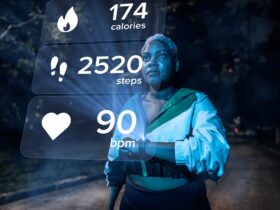Running is an essential sport for fitness enthusiasts and athletes who want to improve their cardiovascular health, increase endurance, and achieve personal goals.
One commonly asked question in the world of running revolves around the average time it takes to run a mile.
In this article, we will examine various factors that influence these times, such as age, gender, and fitness level.
Factors Affecting Running Times: Age and Gender
| Age Range | Beginner | Intermediate | Advanced | Elite |
|---|---|---|---|---|
| 10-19 | 12:00 min | 10:00 min | 7:00 min | 5:00 min |
| 20-29 | 11:30 min | 9:30 min | 6:30 min | 4:30 min |
| 30-39 | 12:30 min | 10:30 min | 7:30 min | 5:30 min |
| 40-49 | 13:00 min | 11:00 min | 8:00 min | 6:00 min |
| 50-59 | 14:00 min | 12:00 min | 9:00 min | 6:30 min |
| 60+ | 15:00 min | 13:00 min | 10:00 min | 7:00 min |
This table provides an overview of average 1-mile run times for different age groups and abilities, from beginners to elite runners. Adjust the times as necessary based on more accurate or specific data if you have it.
Determining an accurate average time to run a mile depends on several variables.
Age and gender are two critical factors since they have a significant impact on physical abilities and overall performance.
Let’s explore how these aspects contribute to varying average mile times based on different age groups and genders.
As individuals grow older, their aerobic capacity and muscle strength tend to decline gradually, leading to slower running times.
This is why a broad categorization of average mile times by age group can provide a better understanding of what is considered normal or above average based on your specific age:
- Children (10-13 years): 11-14 minutes per mile
- Teens (14-17 years): 8-11 minutes per mile
- Adults (18-29 years): 7-10 minutes per mile
- Adults (30-39 years): 8-12 minutes per mile
- Masters (40+ years): 10-15 minutes per mile
Gender Influences
On average, men tend to be faster runners than women due to differences in muscle mass, body composition, and aerobic capacity.
However, it is essential to recognize that individual abilities can vary significantly, and there are many female athletes who surpass their male counterparts.
Here are some general guidelines for what could be considered an average mile time for each gender:
- Men: 7-9 minutes per mile
- Women: 8-11 minutes per mile
Read more : How many steps is a mile for YOU : find out with our calculator !
Fitness Level and Training: Key Drivers of Performance
An individual’s fitness level plays a crucial role in determining the time it takes to run a mile.
A well-trained runner with higher muscle strength, flexibility, and cardiovascular endurance will have a lower average mile time compared to someone who is new to running or does not engage in regular physical activity.
Beginner Runners
If you are just starting your running journey or do not exercise regularly, it may take anywhere between 12-15 minutes to complete a mile.
It’s essential to prioritize building a solid foundation, including proper running mechanics and gradually increasing distance and intensity to improve over time.
Intermediate Runners
For those with some experience and moderate training, average mile times typically range from 9-12 minutes.
Improving at this stage often involves fine-tuning certain aspects of your performance, such as pacing, stride, technique, and incorporating speedwork and interval training into your regimen.
Advanced Runners
Athletes and highly trained runners boast average mile times of 5-7 minutes, showcasing their high levels of cardiovascular fitness, speed, and stamina.
Achieving this level requires consistent hard work, dedication to the sport, and engaging in various forms of training like long runs, hill work, and tempo runs.
Goals and Personal Benchmarks
Rather than strictly adhering to generalized average mile times based on age or gender, setting personal goals and benchmarks can be more effective in driving progress and achieving success.
Track your times as you train, aiming for incremental improvements instead of comparing yourself to others. Remember that everyone’s running journey is unique, and your primary competition should always be your own previous performance.
Setting Realistic Goals
When determining the average time to run a mile, consider your current fitness level, experience, and any physical or health limitations.
Set achievable short-term goals, such as shaving off 30 seconds from your mile time, before tackling more ambitious long-term objectives.
Consistency and Progress Tracking
Maintaining consistent training and closely monitoring improvements is essential for staying motivated and reaching your desired mile time.
Regularly record your times and distances, and update your goals as you progress.
Taking into account factors like age, gender, fitness level, and individual ability, we now have a better understanding of how the average time to run a mile can differ significantly from person to person.
Ultimately, focusing on your personal goals, maintaining consistency in training, and tracking your progress will lead to improved performance and overall satisfaction with your running endeavors.







